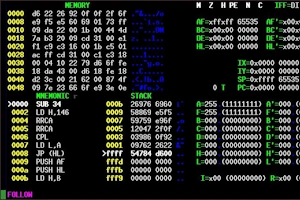PyTorchでニューラルネットワークを構築:torch.nn.ModuleList入門
PyTorchのニューラルネットワークにおけるtorch.nn.ModuleList
従来のリストとの違い
従来のPythonリストと比較すると、torch.nn.ModuleListには以下の利点があります。
- モジュールの登録と管理を容易にする:
torch.nn.ModuleListは、torch.nn.Moduleを継承したモジュールのみを追加できます。これは、誤ったモジュールを追加してエラーが発生するのを防ぎ、コードの安全性と信頼性を向上させます。 - 自動登録:
torch.nn.ModuleListに追加されたモジュールは、自動的にネットワークのparameters()とmodules()属性に登録されます。これは、モデルのパラメータの更新やモジュールのアクセスを容易にする便利な機能です。 - シームレスなシリアル化とデシリアライズ:
torch.nn.ModuleListは、モデルのシリアル化とデシリアライズにおいてもシームレスに動作します。これは、モデルを保存して再読み込みしたり、異なる環境に移行したりする際に役立ちます。
使用例
torch.nn.ModuleListは、様々なニューラルネットワークアーキテクチャで使用できます。以下に、簡単な例を紹介します。
import torch
from torch import nn
class MyModel(nn.Module):
def __init__(self):
super().__init__()
self.layers = nn.ModuleList([
nn.Linear(10, 20),
nn.ReLU(),
nn.Linear(20, 10)
])
def forward(self, x):
for layer in self.layers:
x = layer(x)
return x
model = MyModel()
print(model)
# 出力:
# MyModel(
# (layers): ModuleList(
# (0): Linear(in_features=10, out_features=20, bias=True)
# (1): ReLU()
# (2): Linear(in_features=20, out_features=10, bias=True)
# )
# )
この例では、MyModelというクラスが定義されています。このクラスは、3つの層からなるニューラルネットワークを表しており、torch.nn.ModuleListを使用して層を管理しています。
torch.nn.ModuleListは、PyTorchのニューラルネットワークにおいて、順序付きのモジュールのリストを管理するための便利なクラスです。従来のリストと比較すると、モジュールの登録と管理を容易にする、自動登録、シームレスなシリアル化とデシリアライズといった利点があります。
PyTorchのtorch.nn.ModuleListを使用したサンプルコード
MLP (Multi-Layer Perceptron)
import torch
from torch import nn
class MLP(nn.Module):
def __init__(self, input_dim, output_dim, hidden_dim=100):
super().__init__()
self.layers = nn.ModuleList([
nn.Linear(input_dim, hidden_dim),
nn.ReLU(),
nn.Linear(hidden_dim, output_dim)
])
def forward(self, x):
for layer in self.layers:
x = layer(x)
return x
# サンプルコード
input_dim = 10
output_dim = 3
model = MLP(input_dim, output_dim)
x = torch.randn(10, input_dim)
y = model(x)
print(y.shape) # 出力: (10, 3)
CNN (Convolutional Neural Network)
import torch
from torch import nn
class CNN(nn.Module):
def __init__(self):
super().__init__()
self.layers = nn.ModuleList([
nn.Conv2d(1, 32, 3, 1, 1),
nn.ReLU(),
nn.MaxPool2d(2, 2),
nn.Conv2d(32, 64, 3, 1, 1),
nn.ReLU(),
nn.MaxPool2d(2, 2),
nn.Flatten(),
nn.Linear(64 * 4 * 4, 10)
])
def forward(self, x):
for layer in self.layers:
x = layer(x)
return x
# サンプルコード
x = torch.randn(1, 1, 28, 28)
model = CNN()
y = model(x)
print(y.shape) # 出力: (1, 10)
RNN (Recurrent Neural Network)
import torch
from torch import nn
class RNN(nn.Module):
def __init__(self, input_dim, output_dim, hidden_dim=100):
super().__init__()
self.rnn = nn.RNN(input_dim, hidden_dim, batch_first=True)
self.fc = nn.Linear(hidden_dim, output_dim)
def forward(self, x):
x, _ = self.rnn(x)
x = x[:, -1, :]
x = self.fc(x)
return x
# サンプルコード
input_dim = 10
output_dim = 3
seq_len = 20
x = torch.randn(1, seq_len, input_dim)
model = RNN(input_dim, output_dim)
y = model(x)
print(y.shape) # 出力: (1, 3)
torch.nn.ModuleList 以外の方法
ネストされたリスト
class MyModel(nn.Module):
def __init__(self):
super().__init__()
self.layers = [
nn.Linear(10, 20),
nn.ReLU(),
nn.Linear(20, 10)
]
def forward(self, x):
for layer in self.layers:
x = layer(x)
return x
# サンプルコード
model = MyModel()
print(model)
# 出力:
# MyModel(
# (layers): [
# (0): Linear(in_features=10, out_features=20, bias=True)
# (1): ReLU()
# (2): Linear(in_features=20, out_features=10, bias=True)
# ]
# )
この方法はシンプルですが、コードの可読性が低下する可能性があります。
OrderedDict
from collections import OrderedDict
class MyModel(nn.Module):
def __init__(self):
super().__init__()
self.layers = OrderedDict([
("linear1", nn.Linear(10, 20)),
("relu", nn.ReLU()),
("linear2", nn.Linear(20, 10))
])
def forward(self, x):
for name, layer in self.layers.items():
x = layer(x)
return x
# サンプルコード
model = MyModel()
print(model)
# 出力:
# MyModel(
# (layers): OrderedDict([
# ('linear1', Linear(in_features=10, out_features=20, bias=True)),
# ('relu', ReLU()),
# ('linear2', Linear(in_features=20, out_features=10, bias=True))
# ])
# )
この方法は、キーと値のペアでモジュールを管理できます。
自作のクラス
上記のいずれの方法もニーズに合わない場合は、自作のクラスを作成することができます。
class MyModuleList(nn.Module):
def __init__(self, modules):
super().__init__()
self.modules = modules
def forward(self, x):
for module in self.modules:
x = module(x)
return x
# サンプルコード
modules = [
nn.Linear(10, 20),
nn.ReLU(),
nn.Linear(20, 10)
]
model = MyModuleList(modules)
print(model)
# 出力:
# MyModuleList(
# (modules): [
# (0): Linear(in_features=10, out_features=20, bias=True)
# (1): ReLU()
# (2): Linear(in_features=20, out_features=10, bias=True)
# ]
# )
この方法は、最も柔軟性がありますが、コード量が増えてしまいます。
最適な方法は、プロジェクトの要件と開発者の好みによって異なります。
- シンプルなプロジェクトの場合は、ネストされたリストで十分です。
- モジュールの名前を付けた
パフォーマンス向上:PyTorch Dataset と DataLoader でデータローディングを最適化する
Datasetは、データセットを表す抽象クラスです。データセットは、画像、テキスト、音声など、機械学習モデルの学習に使用できるデータのコレクションです。Datasetクラスは、データセットを読み込み、処理するための基本的なインターフェースを提供します。
PyTorch Miscellaneous: torch.utils.cpp_extension.get_compiler_abi_compatibility_and_version() の概要
torch. utils. cpp_extension. get_compiler_abi_compatibility_and_version() は、C++ 拡張モジュールをビルドする際に、現在のコンパイラが PyTorch と互換性があるかどうかを確認するために使用されます。

PyTorch C++ 拡張開発をレベルアップ! include パス取得の奥義をマスターしよう
torch. utils. cpp_extension. include_paths() は、PyTorch C++ 拡張をビルドするために必要なインクルードパスを取得するための関数です。 引数として cuda フラグを受け取り、True の場合、CUDA 固有のインクルードパスを追加します。 関数はインクルードパス文字列のリストを返します。

PyTorchのC++バックトレースを取得:torch.utils.get_cpp_backtraceの使い方
torch. utils. get_cpp_backtrace は、PyTorch の C++ バックトレースを取得するための関数です。これは、C++ コードで発生したエラーのデバッグに役立ちます。機能この関数は、現在のスレッドの C++ バックトレースをリストとして返します。各要素は、フレームの情報を含むディクショナリです。

PyTorchで事前学習済みモデルを使う:torch.utils.model_zoo徹底解説
torch. utils. model_zoo でモデルをロードするには、以下のコードを使用します。このコードは、ImageNet データセットで事前学習済みの ResNet-18 モデルをダウンロードしてロードします。torch. utils


Tensorを用いた連立方程式の解法: torch.Tensor.lu_solve() の詳細解説
概要torch. Tensor. lu_solve()は、PyTorchのTensorクラスにおいて、LU分解を用いて連立方程式を解くための関数です。LU分解は、行列を下三角行列Lと上三角行列Uの積に分解する手法です。この関数は、LU分解の結果であるLU_dataとLU_pivotsを用いて、連立方程式Ax=bの解xを求めます。
torch.fx.Interpreter.boxed_run() のサンプルコード
torch. fx. Interpreter. boxed_run() は、PyTorch FX でグラフモジュールを実行するための重要な関数です。この関数は、グラフモジュールを Python 関数に変換し、その関数を引数として渡された入力データで実行します。
PyTorchのMultiheadAttention:Transformerモデルの鍵を握る技術
アテンション機構は、入力シーケンスの異なる部分に焦点を当てることで、モデルが重要な情報に集中できるようにするニューラルネットワークの技術です。これは、入力シーケンス内の各要素に対して、その要素と他の要素との関連性を表す重みベクトルを計算することで実現されます。
バッチ処理、GPU上での計算にも対応!PyTorch torch.detの便利な機能
torch. det の使い方この例では、2 行 2 列の行列 A の行列式を計算し、結果を出力しています。torch. det の引数input: 行列式を計算したい正方行列。torch. Tensor 型で、バッチ処理にも対応しています。
PyTorch Probability Distributions: Transform.inverse_shape とは? 使い方、サンプルコード、応用例を徹底解説
torch. distributions. transforms. Transform は、確率分布の形状を変更するために使用されるモジュールです。このモジュールは、元の分布のパラメータを変換し、新しい形状を持つ分布を生成します。inverse_shape メソッドは、Transformオブジェクトに対して形状を逆変換するために使用されます。つまり、Transform によって変更された形状を元の形状に戻します。